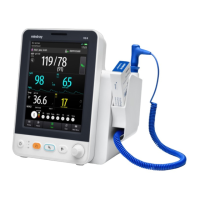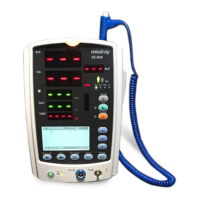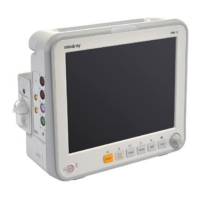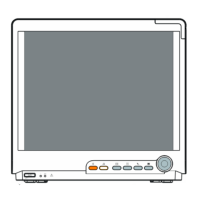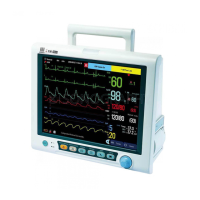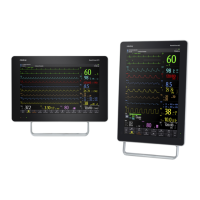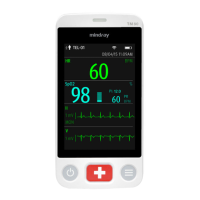2-1
2 Theory of Operation
2.1 Overview
The Monitor is intended for monitoring physiologic parameters, including SpO
2
, PR, NIBP
and TEMP, on adult, pediatric, and neonatal patients in healthcare facilities by clinical
physicians or appropriate medical staff under the direction of physicians.
The equipment also:
Provides audible and visual alarm indications in case of patient or equipment problems;
Provides display, review, storage and printing of monitored information;
Incorporates multiple input devices such as buttons, knob, and touchscreen; and,
Enables program upgrade over the network.
Nurse Call
CMS/Gatewa
AP
LAN
W
i
-
F
i
EMR Server
Other device
Reserved port
Monito
The above figure shows a system consisting of the vital signs monitor and its peripheral
devices. The vital signs monitor:
Can be used for monitoring the physiological parameters, giving alarms and reviewing
patient data, etc.
Supports recorder.
Supports nurse call function.
Supports Wi-Fi module, wired network, remote view, and communication with the
Central Monitoring System (hereinafter called CMS).
Supports external AC power source and an internal battery.
Supports clinical data acquisition, which has two ways: by SD card and by USB drive.
The system software should support data output function, for SD card is a built-in
device.
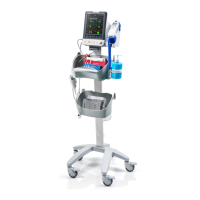
